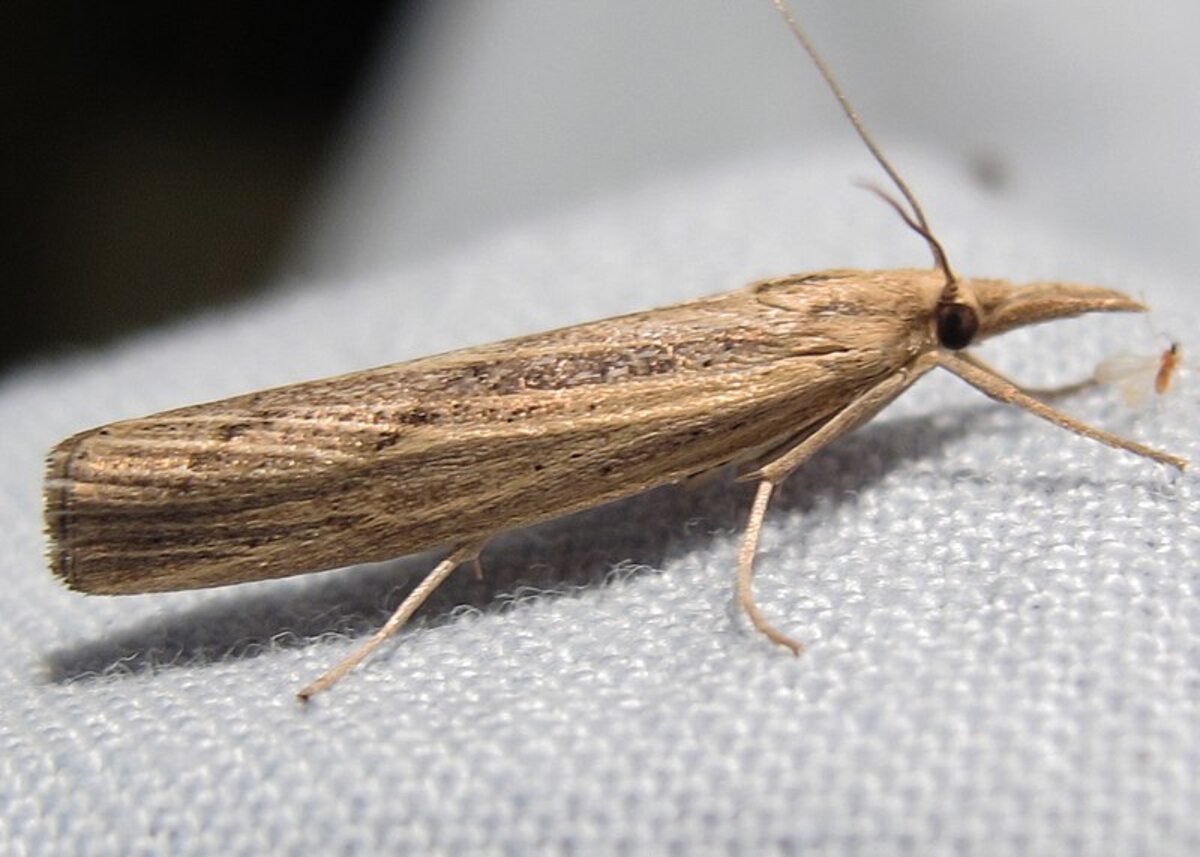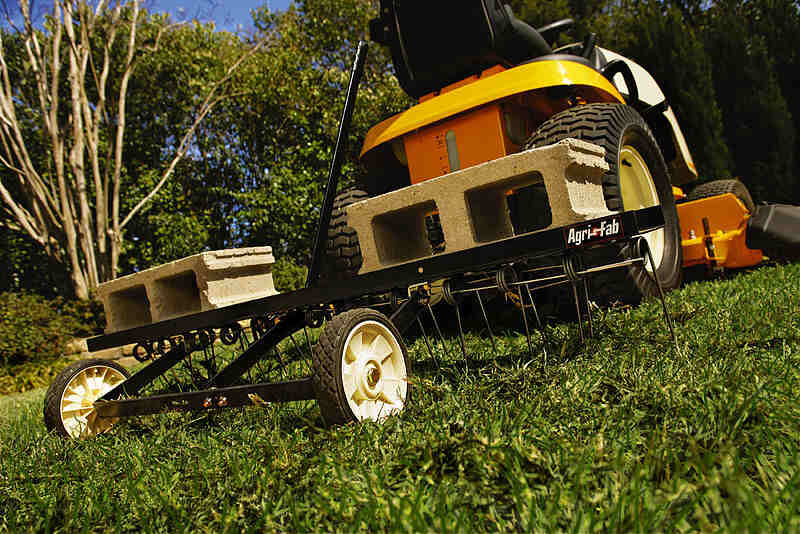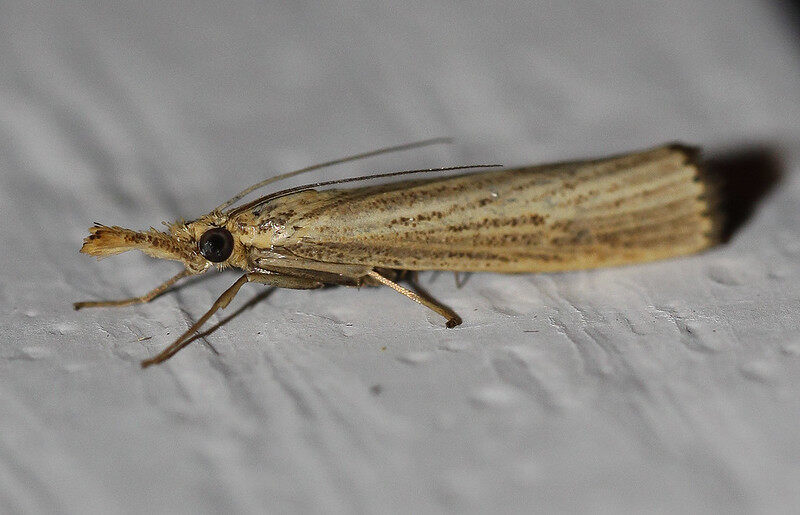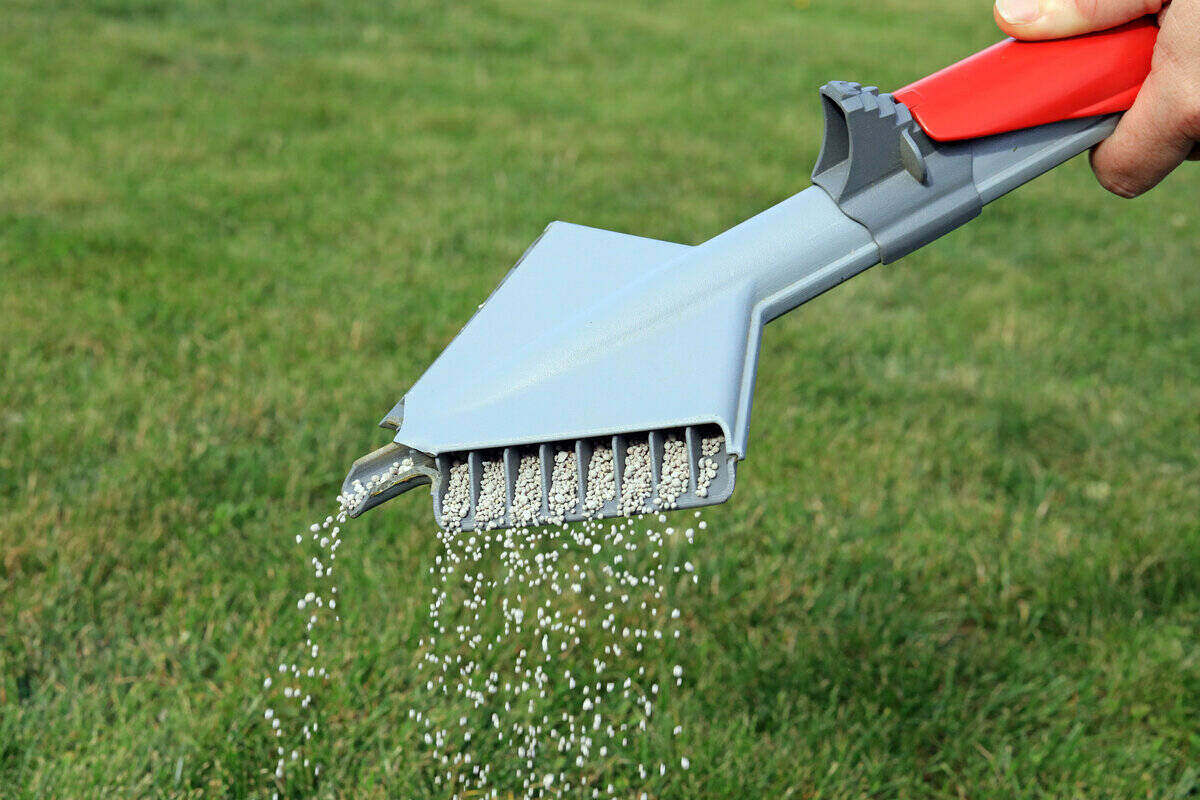
Some caterpillars turn into beautiful butterflies, while others turn into lawn moths that spell trouble. Sod webworms are the caterpillar form of these lawn moths, and they’re a nuisance in the lawn. In this article, we explain how to get rid of sod webworms, how these caterpillars destroy your turfgrass, and what you can do to prevent them.
Brownie Points: And if you’re not sure what the signs of sod webworms are, we’ll cover that too.
What Are Sod Webworms?
The term sod webworms is often used interchangeably to describe the pests’ larval stage and adult moth stage. When talking about sod webworms in this article, we’re referencing the larval caterpillars that damage the lawn.
The adult sod webworms (lawn moths) are not the ones that cause the damage. In the larval stage, these caterpillars damage your lawn by feeding on the stems and grass leaves at night.
Leading up to the damage, you might notice moths flying in a zigzag pattern across your lawn. This isn’t necessarily where the problem occurs though. The problem occurs when the female moth lays up to 200 eggs while flying in that zigzag pattern. Within about a week, those eggs will hatch and it’s feast time for those caterpillars.
How to Get Rid of Sod Webworms

You’ve established that you have sod webworms, and now you’re eager to get rid of them. Here are some options for you to consider.
Dethatch
Dethatching is the practice of removing thatch (build-up of dead and living organic matter strung together between your grass and soil). Some thatch accumulation is normal and beneficial, but when thatch gets too thick, it can cause problems–– such as becoming the perfect hideout for sod webworms and other lawn pests.
Dethatching the lawn can help to remove the eggs and larvae that found a home in the thatch layer.
Insecticides
Insecticides are most effective on sod webworms when you’ve discovered them early, while the pests are still small. It’s best to apply insecticides in the late afternoon or early evening since sod webworms become active later in the day.
Liquid-form insecticides may provide better coverage than granular insecticides. Follow the directions on the insecticides for application instructions.
Note: The following are examples of insecticides for sod webworms:
- Spinosad (Conserve SC)
- Acephate (Orthene)
- Carbaryl (Sevin)
- Synthetic pyrethroids (bifenthrin and cyfluthrin)
Beneficial Nematodes
Beneficial nematodes are minuscule roundworms that are readily available at garden and home improvement stores. After the sod webworm ingests the nematode, the nematode infects its host and kills it.
Note: Different nematode species attack different pests. The following beneficial nematodes are commonly used to control sod webworms:
- Steinernema carpocapsae
- Heterorhabditis bacteriophora
Beneficial nematodes are safe to use around people and pets.
Bacillus Thuringiensis (Bt)
Bacillus thuringiensis is a bacteria that lives in the soil. It creates a protein that’s toxic to some insects, including sod webworms. The liquid-form is ideal for uniform coverage and ease of application.
Note: There are different strains of Bt, so ensure you choose one that is meant for sod webworms, such as Bt-kurstaki. Bt is not harmful to people, pets, and beneficial insects.
What Do Sod Webworms Look Like?

While there are 20 different types of sod webworms, all types in the larvae stage are a cylindrical shape, usually a tan color with spots along their body, and about ¾ to 1 inch long.
The lawn moths (adult form) are a light brown color. Their heads have snout-like projections with a wingspan of about ¾ to 1 inch.
Sod webworms go through a life cycle starting from an egg to larvae to pupa to finally an adult moth.
What Causes Sod Webworms
Thatch accumulation can contribute to the presence of sod webworms since it’s where they like to burrow. Over-fertilizing can cause an increase in thatch, so be mindful of how much fertilizer (especially nitrogen) you’re giving your lawn.
Although sod webworms can feed on any grass type, bentgrass, buffalograss, Kentucky bluegrass, fine fescue, and zoysiagrass tend to be the most susceptible.
Pro Tip: The grass types that are susceptible to sod webworms can be overseeded with an endophyte-enhanced seed variety to make them less susceptible. Endophyte-enhanced grass seed varieties contain fungi that work in conjunction with the grass to create greater pest resistance and higher stress tolerance.
Signs of Sod Webworms
Sod webworms are nocturnal so unless you’re out at night, you might not notice them until the damage is already done in the morning. There are a few key signs to look for that might indicate your lawn is suffering from sod webworm damage.
Visible Webs on Your Lawn
Although sod webworms are active at night, you might notice their webs with the help of morning dew. The morning dew drops attach to the webs, making them easier to spot.
Moths at Dusk
Moths at dusk could indicate sod webworms will soon be a problem. After the female moths lay their eggs, the caterpillars will emerge within about a week. This will usually happen when it’s warm, around July and August.
Brown Spots on Turfgrass
Although brown spots on your turfgrass could indicate different problems, such as a lack of water from a drought, it’s important to be mindful that it could be from sod webworms. If you notice the brown spots that continue to grow irregularly and grow together, you might want to consider taking a closer look at your grass blades. Looking closer at your grass blades will enable you to see a grazed or scalped appearance.
Grazed or Scalped Appearance
Upon a closer look at the brown spots on your turfgrass, you may discover a grazed or scalped appearance from the sod webworms eating away at it.
In the same area as the grazed or scalped appearance, you might also notice the caterpillars have left some additional evidence behind–– excrement. The excrement will look like small piles of green pellets.
Drench Test
If all else fails and you’re still left wondering whether the lawn damage is from sod webworms, it might be time to conduct a drench test. It’s a simple DIY test with items you already have laying around your house. To perform this test for sod webworms you’ll need:
- One to two tablespoons of dish soap
- One to two gallons of water
Pour the mixture over many different spots (one square yard each) and wait about five minutes. The caterpillars will get irritated by the soapy water and rise to the soil surface, making it easier to count how many are present. If you count 15 or more, you likely have an infestation and it should be handled promptly to avoid further damage.
How to Prevent Sod Webworms
You’ve either done the hard work of ridding your lawn of sod webworms or you’ve heard stories of these pests and would rather not deal with them. Either way, we’re going to touch on some ways you can prevent sod webworms.
Fertilize
Fertilizer is a key factor to creating a healthier lawn. It provides your lawn with the nutrients it could be lacking. However, it’s important to know how much fertilizer to apply. Too little fertilizer won’t be effective but too much fertilizer can invite sod webworms and other insects to your lawn because of the potential excess thatch accumulation.
Test your soil before fertilizing to ensure you provide your lawn with the exact nutrients it needs.
The bottom line: The healthier your lawn, the more resistant it is to sod webworm damage.
Mow
Each grass type has a certain recommended mowing height. Following these guidelines will help create a healthier, stronger, and better-looking lawn, which makes it more resistant to sod webworms and other lawn pests. If you have a current sod webworm infestation, bag your grass clippings after you mow.
| Cool-season grass type | Mow grass down to this height |
| Fine and tall fescue | 2 to 3 inches |
| Kentucky bluegrass | 2.5 to 3.5 inches |
| Perennial ryegrass | 1.5 to 2.5 inches |
| Warm-season grass type | Mow grass down to this height |
| Bahiagrass | 3 to 4 inches |
| Bermudagrass (common) | 1.5 to 2.5 inches |
| Bermudagrass (hybrid) | 0.5 to 1.5 inches |
| Buffalograss | 2 to 3 inches |
| Carpetgrass | 0.75 to 2 inches |
| Centipedegrass | 1 to 2 inches |
| St. Augustinegrass | 2.5 to 3 inches |
| Zoysiagrass | 1 to 2 inches |
Tip: No matter what grass type you have, you never want to mow more than one-third of the grass blade off during a single mow. Doing so can stress your lawn and leave it more susceptible to pests and diseases.
Water
Providing your lawn with the proper amount of water is important in preventing sod webworms, especially since sod webworms thrive in areas of drought.
Both cool-season and warm-season grasses need 1 to 1.5 inches of water per week during the active growing season.
Dethatch
Dethatching your lawn not only helps get rid of sod webworms but it can also help prevent sod webworms.
FAQ About Sod Webworms
The winter season won’t destroy sod webworms. These pests will seek shelter in their lined tunnels under the soil and re-emerge in the spring when it is warm again.
Birds can certainly enjoy a feast on the sod webworms that are trying to feast on your lawn. You could use birds to help manage sod webworms while you decide how you want to handle the sod webworms.
No. Sod webworms are not harmful to people or pets. They do not bite or sting. They are considered an annoyance rather than harmful.
When to Call a Professional
Sod webworms can be a headache and preventing these pests is critical. Proper mowing is an important part of prevention. If you’d rather leave the mowing to someone else, connect with local pros who can take care of your mowing, edging, and trimming needs.
Main Image Credit: Jacy Lucier / Wikimedia Commons / CC BY-SA 4.0
